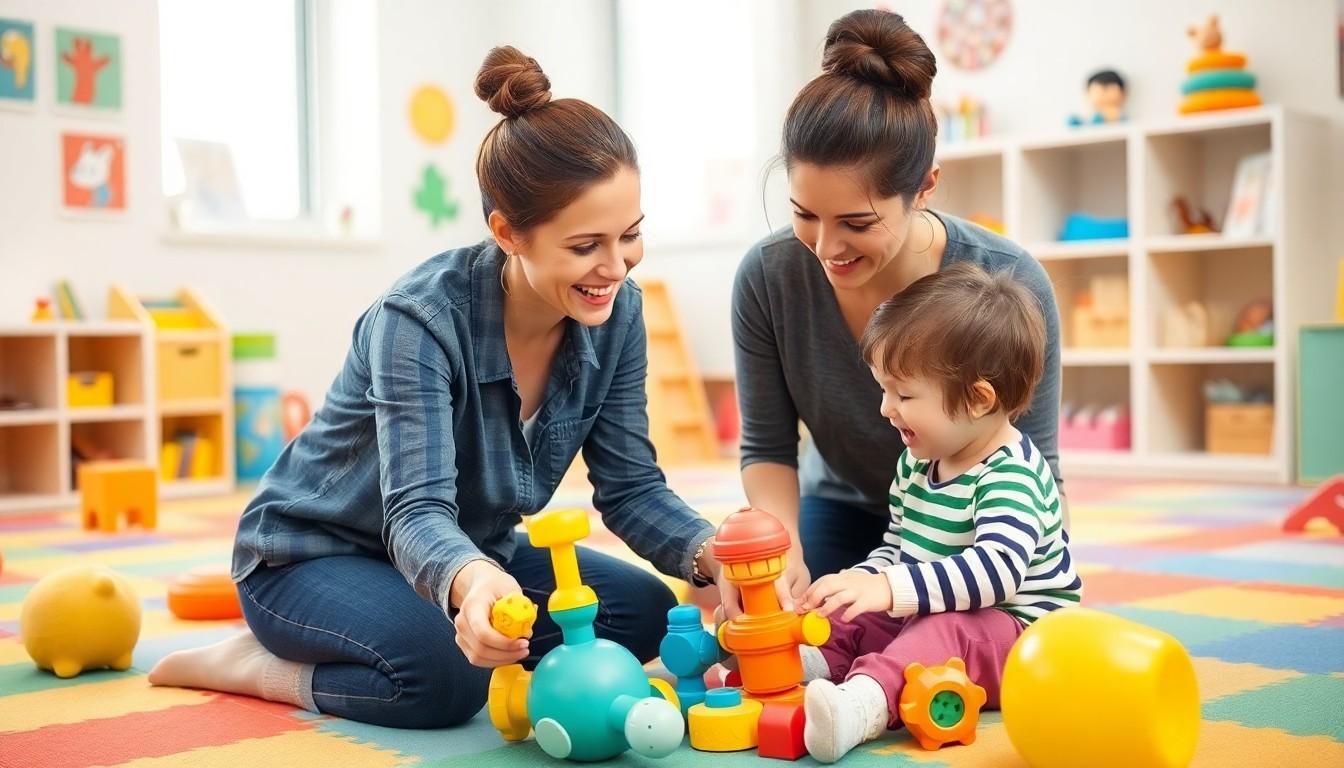When it comes to understanding how we communicate, behavior analysts are like the Sherlock Holmes of language skills. They dive deep into the nuances of interaction, unraveling the mysteries behind how words and gestures shape our daily lives. With an arsenal of assessments, these professionals pinpoint strengths and areas for growth, ensuring that everyone has a voice—literally.
Imagine a world where miscommunication is as rare as a unicorn sighting. With the right assessments, behavior analysts help individuals navigate the complex landscape of language and communication. They focus on everything from vocabulary to non-verbal cues, making sure nobody’s left talking to a wall. So buckle up as we explore how these assessments can transform communication skills and unlock a treasure trove of potential.
Language and Communication Skills Assessments Conducted by Behavior Analysts Will Focus on
Language and communication skills assessments conducted by behavior analysts focus on various components essential for effective interaction. These evaluations emphasize understanding verbal and non-verbal communication patterns. Analysts gather data through direct observation and standardized tools tailored to individual needs.
Key areas of assessment include expressive language skills, which refer to how individuals convey their thoughts and feelings. Receptive language skills also receive attention, highlighting how well individuals comprehend spoken and written language. Play-based assessments provide valuable insights into social communication behaviors among children.
Further assessments may involve evaluating pragmatic language skills, critical for navigating everyday conversations and social situations. Analysts often assess langhage use in real-life contexts, ensuring that evaluations account for daily communication challenges. Modalities used in assessments range from structured interviews to skill-specific tasks.
Behavior analysts utilize the findings from these assessments to develop targeted interventions. Tailoring strategies enables them to address specific deficits and enhance overall communication abilities. Assessments serve as a baseline, allowing for measuring progress over time. Regular review ensures that interventions remain aligned with individuals’ evolving needs.
Ultimately, these comprehensive assessments reveal untapped potential, guiding individuals toward improved communication outcomes. Understanding the nuances of language and communication through assessments empowers behavior analysts to foster significant growth in their clients.
Importance of Assessing Language and Communication Skills

Assessing language and communication skills plays a crucial role in understanding individual needs. Behavior analysts prioritize these assessments to ensure effective intervention and support.
Impact on Developmental Outcomes
Developmental outcomes hinge on strong communication skills. Research indicates that children with effective language abilities experience better social interactions, enhanced academic performance, and improved emotional regulation. When behavior analysts assess these skills, they identify areas of strength and need, allowing tailored intervention strategies. Specific deficits addressed through targeted techniques foster significant growth, ultimately enhancing overall cognitive and social development.
Role in Behavior Analysis
In behavior analysis, language and communication skills assessments serve multiple functions. Analysts utilize these evaluations to inform intervention planning and track progress over time. By gathering detailed information on expressive, receptive, and pragmatic language, they create personalized strategies addressing unique challenges. Regular assessments enhance intervention effectiveness by adapting techniques according to evolving communication needs. Ultimately, these evaluations drive meaningful changes, empowering individuals to communicate more effectively.
Key Focus Areas in Assessments
Assessments conducted by behavior analysts prioritize critical components of communication skills. The focus areas include verbal communication, nonverbal communication, and social interaction skills.
Verbal Communication Skills
Verbal communication skills encompass expressive and receptive language abilities. Behavior analysts assess how well individuals can articulate thoughts and comprehend spoken language. They gather data through standardized assessments and interactive methods, examining vocabulary use and sentence structure. Assessments often include tasks involving narrative production and response to questions, reflecting individuals’ verbal fluency. Observational data during conversational exchanges also provide insights into speech clarity and conversational turn-taking. These insights guide tailored interventions that reinforce expressive language capabilities.
Nonverbal Communication Skills
Nonverbal communication skills play a significant role in overall communication effectiveness. Analysts evaluate how individuals use facial expressions, gestures, and body language to convey meaning. Observational assessments capture the subtleties of nonverbal cues during interactions. Recognizing the significance of eye contact and posture, behavior analysts gauge comfort levels in social situations. They explore how well individuals interpret nonverbal signals from others, which is crucial for successful interactions. Thus, insights from nonverbal assessments inform strategies to enhance interpretive and expressive nonverbal skills.
Social Interaction Skills
Social interaction skills represent a foundational aspect of effective communication. Behavior analysts focus on assessing turn-taking, topic maintenance, and adaptability in various social contexts. They observe and analyze interactions within peer groups, evaluating how individuals initiate and respond to conversations. Consideration of pragmatic language use enhances understanding of appropriateness in responses. Role-playing activities may serve as valuable tools during assessments, shedding light on social understanding and cooperative engagement. This information helps shape interventions aimed at improving individuals’ social competence and relational abilities.
Methods Used in Assessments
Behavior analysts employ a variety of methods to evaluate language and communication skills, ensuring a thorough understanding of each individual’s needs.
Standardized Assessment Tools
Standardized assessment tools offer reliable measures of language proficiency. These instruments often include standardized tests that evaluate expressive and receptive language abilities. Analysts administer tools designed to assess vocabulary usage, grammatical structure, and comprehension skills. Such assessments provide quantifiable data, allowing for objective comparisons against developmental norms. Many assessments also include age-appropriate benchmarks to guide intervention strategies. These tools facilitate tailored intervention planning, ensuring that each strategy aligns with identified language deficits.
Observational Assessments
Observational assessments play a crucial role in gauging communication skills in natural settings. Analysts observe individuals in various environments, capturing authentic verbal and nonverbal interactions. These observations reveal insights into pragmatic language use, such as topic maintenance and turn-taking. Behavioral patterns during play or conversation help analysts understand social communication dynamics. Such assessments allow for a comprehensive view of an individual’s abilities, guiding targeted interventions in real-world contexts. By focusing on observable behaviors, analysts can tailor techniques that enhance immediate communication effectiveness.
Challenges and Considerations
Behavior analysts encounter various challenges during language and communication skills assessments. One significant challenge is the variability in individual responses. Each person presents unique strengths and weaknesses, making it crucial for analysts to personalize their approach.
Inconsistency in communication behaviors complicates evaluations. Analysts must navigate this variability to extract accurate data from standardized tools and observations. Balancing assessment thoroughness with the need for efficiency often poses a dilemma during evaluations.
Cultural factors also play a role. Behavioral analysts must consider cultural nuances that influence communication styles. Awareness of these differences fosters a more inclusive assessment process.
Collaboration with caregivers and educators enhances the assessment’s quality. Gathering insights from those who interact regularly with individuals offers valuable context. This collaboration ensures that assessments reflect real-world communication abilities.
Time constraints present another hurdle. Evaluating various communication skills necessitates sufficient time to delve into expressive and receptive language competencies. Optimizing assessment sessions helps analysts gather comprehensive information effectively.
Data interpretation requires meticulous attention. Behavior analysts must analyze results accurately to inform intervention strategies. Misinterpretation can lead to ineffective interventions, emphasizing the importance of precise analysis.
Ongoing training remains vital. Continuous professional development equips analysts with the latest methodologies and insights, enabling them to handle diverse communication scenarios. Staying updated enhances assessment practices and improves outcomes.
By addressing these challenges, behavior analysts improve the effectiveness of language and communication skills assessments. Their commitment to refining assessment processes directly impacts intervention quality and individual communication growth.
Unique Needs
Language and communication skills assessments conducted by behavior analysts play a vital role in enhancing individuals’ communication abilities. By focusing on verbal and nonverbal components as well as social interaction skills, these assessments provide a comprehensive understanding of each person’s unique needs.
The insights gained from these evaluations inform targeted interventions that address specific deficits, fostering significant growth in communication outcomes. Regular reviews and adaptations ensure that interventions remain aligned with evolving needs, ultimately empowering individuals to communicate more effectively in their daily lives.
This ongoing process not only enhances social interactions but also contributes to better academic performance and emotional regulation, highlighting the profound impact of effective communication skills on overall development.





